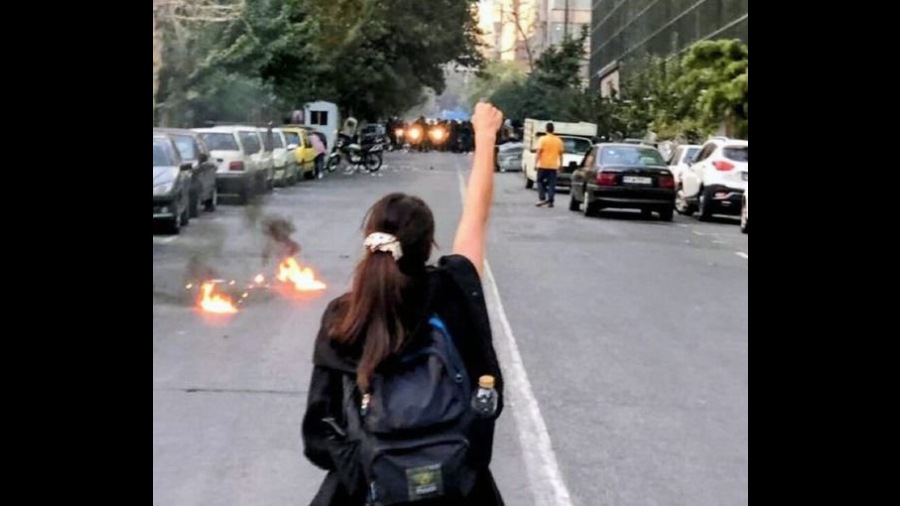Iran has abolished the morality police, according to an announcement by the attorney-general carried on state media, following months of protests set off by the death of a young woman who was being held by the force for supposedly violating the country’s strict Islamic dress laws.
The decision, reported by state news outlets late on Saturday night, appeared a major victory for feminists who have sought for years to dismantle the force and for the protest movement ignited by the death of the young woman, Mahsa Amini, 22, in September.
The unrest has amounted to one of the biggest challenges in decades to Iran’s system of authoritarian clerical rule and the decision to scrap the morality police was the government’s first major concession.
There was no confirmation of the closure from the interior ministry which is in charge of the morality police.
Iranian state media said public prosecutor Mohammad Jafar Montazeri was not responsible for overseeing the force. Protesters in Iran called on Sunday for a three-day strike this week, stepping up pressure on authorities, Reuters reported. The morality police “was abolished by the same authorities who installed it”, the statement by attorney-general Montazeri said, according to state media reports. But he went on to suggest that the judiciary would still enforce restrictions on “social behaviour”. He also indicated that the authorities were reviewing the head scarf regulations.
Al Alam state television said foreign media were depicting Montazeri’s comments as “a retreat on the part of the Islamic Republic from its stance on hijab and religious morality as a result of the protests”, but that all that could be understood from his comments was that the morality police were not directly related to the judiciary.
It was not immediately clear what impact these changes would have on the enforcement of the dress code, or whether the authorities were planning to relax the hijab law.
The primary role of the morality police was to enforce the laws related to Iran’s conservative Islamic dress code, imposed after the 1979 Islamic Revolution and recently invigorated by the country’s new ultraconservative President.
The dress code for women became an ideological pillar of the ruling clerical establishment, central to its identity. The restrictions require women to cover their bodies in long, loose clothing and their hair with a head scarf or hijab.
Despite mass protests, long black robes and chadors, a black head-covering that reaches down the chest, became the norm for women.
When Amini died in custody after being arrested by the morality police on a Tehran street, the nationwide protests that followed focused initially on the Islamic dress laws.
The protests, now in their third month, have been led by women and young people demanding an end to clerical rule and greater social freedom, tapping into years of pent-up anger.
Protesters chanted “woman, life, freedom”, tore off their hijabs, burned them in street bonfires and cut their hair in symbolic acts of defiance. But the protests soon grew to encompass the entire range of discontents with Iran’s ruling establishment, making it unclear whether the protesters would be satisfied with this concession.
Demonstrators fed up with political repression, censorship, corruption and economic mismanagement have called for an end to the Islamic Republic. They have taken aim directly at the most powerful man in Iran, Supreme Leader Ayatollah Ali Khamenei, whom they want removed from power.
In recent years, Iranian women had grown bolder within the constraints of the dress law, embracing colourful robes, barely covering their hair in loose wraps and, in some cases, even letting their headscarves drop onto their shoulders, baring their hair. Though the morality police still roamed the streets, enforcement appeared spotty.
Women’s rights activists led the way in carving out greater flexibility around the hijab, defying the law with protests in which they exposed their hair in videos posted to social media or in the street. But after the election of a new hard-line President, Ebrahim Raisi, last year, the government cracked down.
In the months before the protests began in mid-September, videos of the morality police dragging women into vans bound for re-education centres — in one case, while the woman’s mother begged them to stop — had stirred fresh outrage among Iranians. In September, the US imposed sanctions on the morality police.
Security forces have responded to the protest movement with a crackdown that has left hundreds dead, and the government has threatened harsh punishment for dissent — including executions.
Rights groups say that at least 300 people have been killed since the protests began, including 50 minors, and the United Nations has said that some 14,000 people have been arrested. The government says at least 30 members of the security forces have been killed.
New York Times News Service










